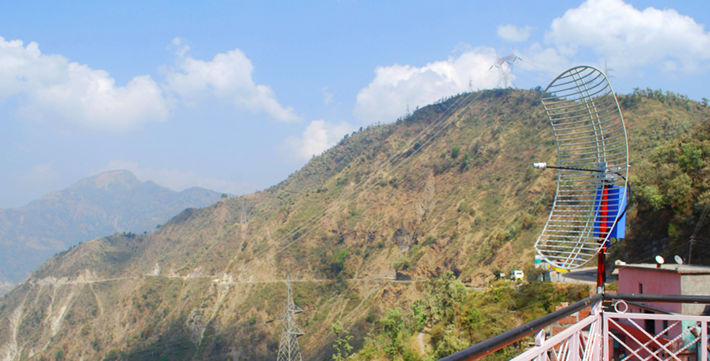The sight of the mighty Himalayas and the scenic surroundings of the hilly terrain can be a source of respite for sore eyes, but when taken in the context of connectivity (both telecommunications and internet) it presents a critical challenge.
Sahastradhara KGFS (SKGFS) located on the foothills of the Himalayas, faced issues of intermittent network connectivity that interfered with its day-to-day operations, resulting in transaction delays and increase in customer wait-time at its branches.
The hilly terrain not only caused instability in continuous network availability at the SKGFS branches, but also the eventual disruption took a lot of time to correct. The options available from the network providers were limited and costly.
Earlier VSATs (Very Small Aperture Terminal) were used to provide Internet connectivity to the SKGFS branches. However VSATs have their own challenges of latency (delay in transmission) and are prone to disruption due to erratic weather. To top it, the running costs of VSATs were high.
To address these issues, IFMR Rural Finance in partnership with AirJaldi – which used the technology that came out of the University of California, Berkeley – created an interconnected network between the SKGFS headquarters in Jolly Grant and its branches, with Internet being supplied through this network. The average distance between branches is 10 kms with the first branch being 75 kms away from the headoffice in Jolly Grant.

Relaying seamless connectivity
The Jolly Grant network uses a combination of wireless WiFi links, utilizing the publicly available and unlicensed 2.4 and 5.8 GHz frequencies and wired LAN cabling. Relays, the antennas used to transmit and receive communication, are all mounted on low masts and are equipped with battery power backup allowing the network to stay up during power cuts – a frequent occurrence. Two of the relays, which are located in areas where power is very erratic or not available at all, are solar powered.
The network is managed and monitored from a central Network Operation Center (NOC), which utilizes a range of Free/Open Source tools configured to suit the network topology. As a result of this solution, now all SKGFS branches have connectivity bandwidth of 256 Kbps and the Head Office is connected at a speed of 512 Kbps through the NOC. The local SKGFS team has also been trained to handle day-to-day issues of basic maintenance.
The Rural Finance technology team is confident of scaling up this technology to other branches of Dhanei KGFS and Pudhuaaru KGFS as and when required.
—
Raman Taneja of IFMR Rural Finance Technology team contributed to this post.


4 Responses
This is an important development in our quest of providing access to financial services in the remote parts of hills. Congratulations to the Technology team for being persistent and thanks to Sahastradhara team for being patient. With this connectivity in place, we would now work on proliferating access points for our customers across the hills with a combination of few branches and a large number of mobile phones/POTs and other mobile access points
Raman, hearty congratulations. Reaching great heights in technology solutions
This has been good going for our team in a long time, we really feel once we have cracked the technology we will be able to live the mission.This has yeilded in positive result in terms of enrollment going up…..
This is really encouraging to see that technology comes to help in such missions. More support like this would enable/help easier access to the financial services for the people who are still unreached.